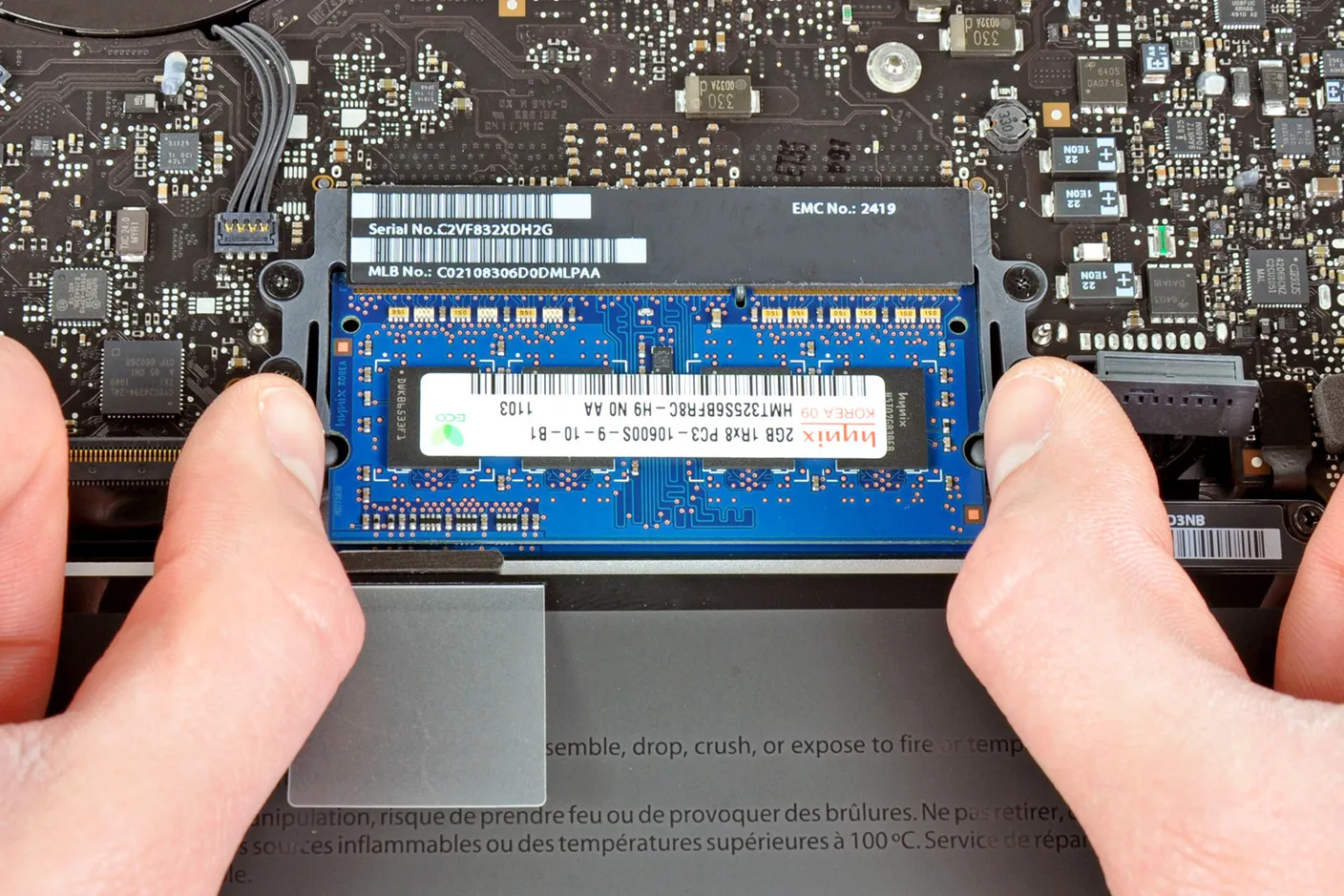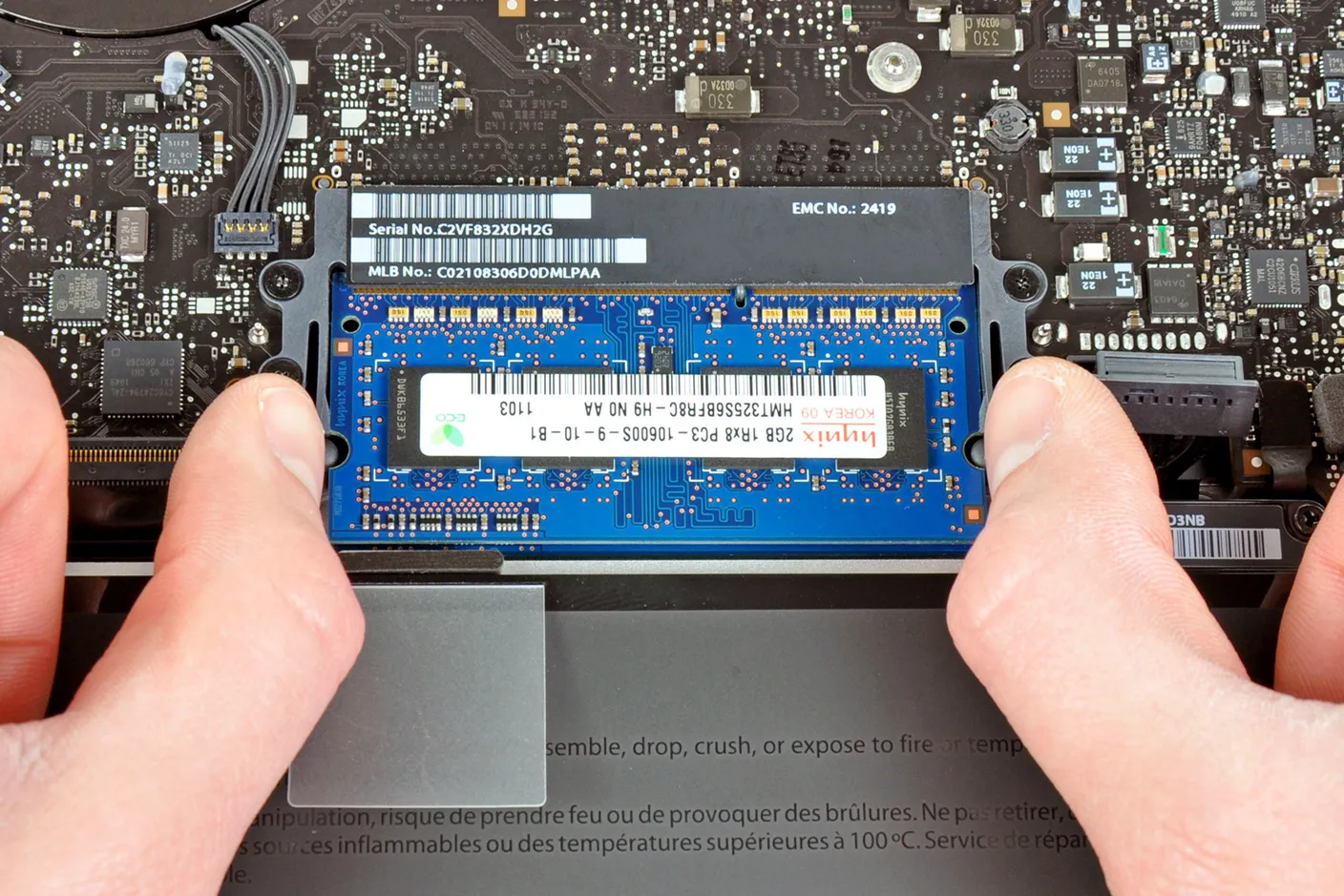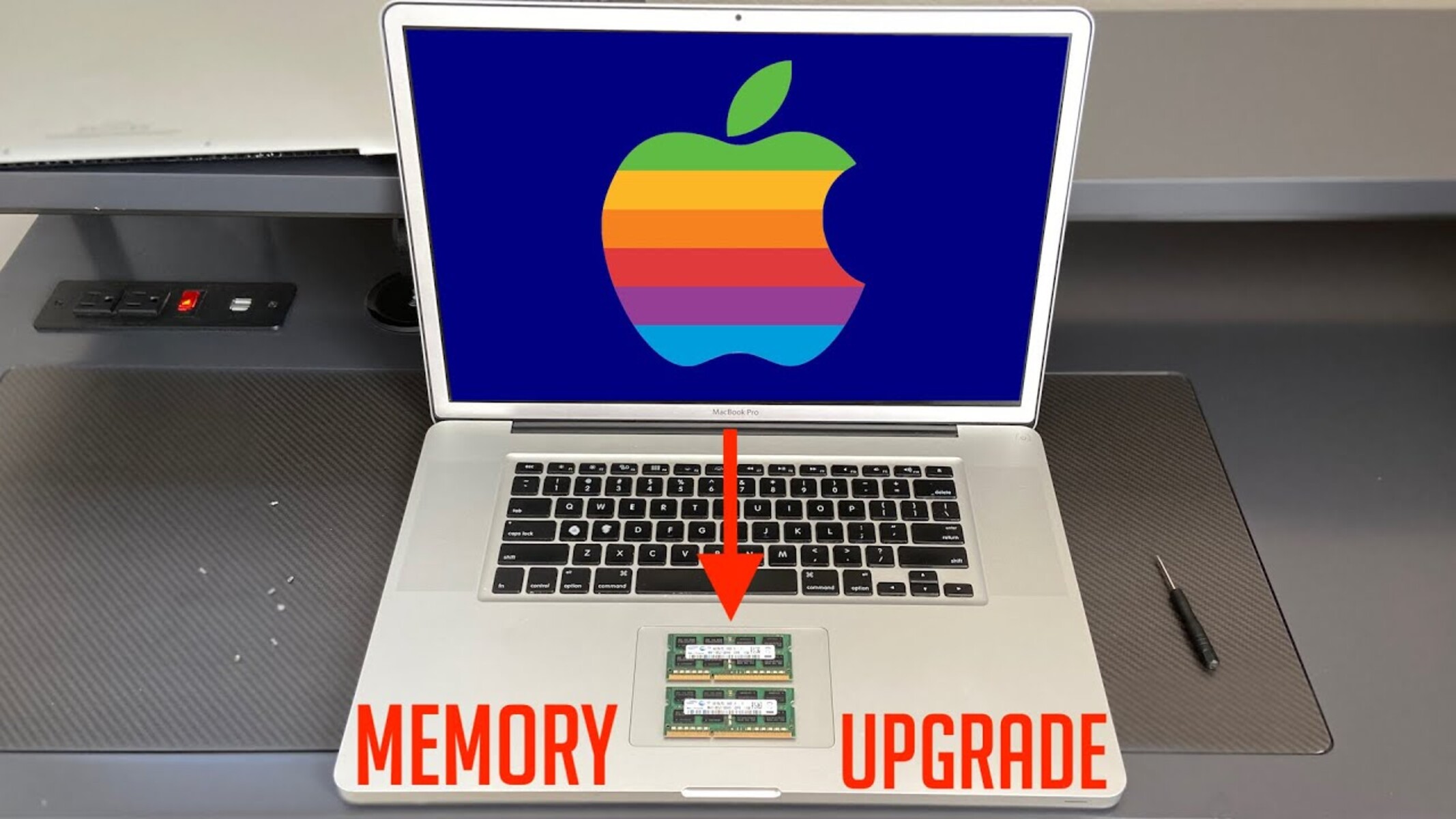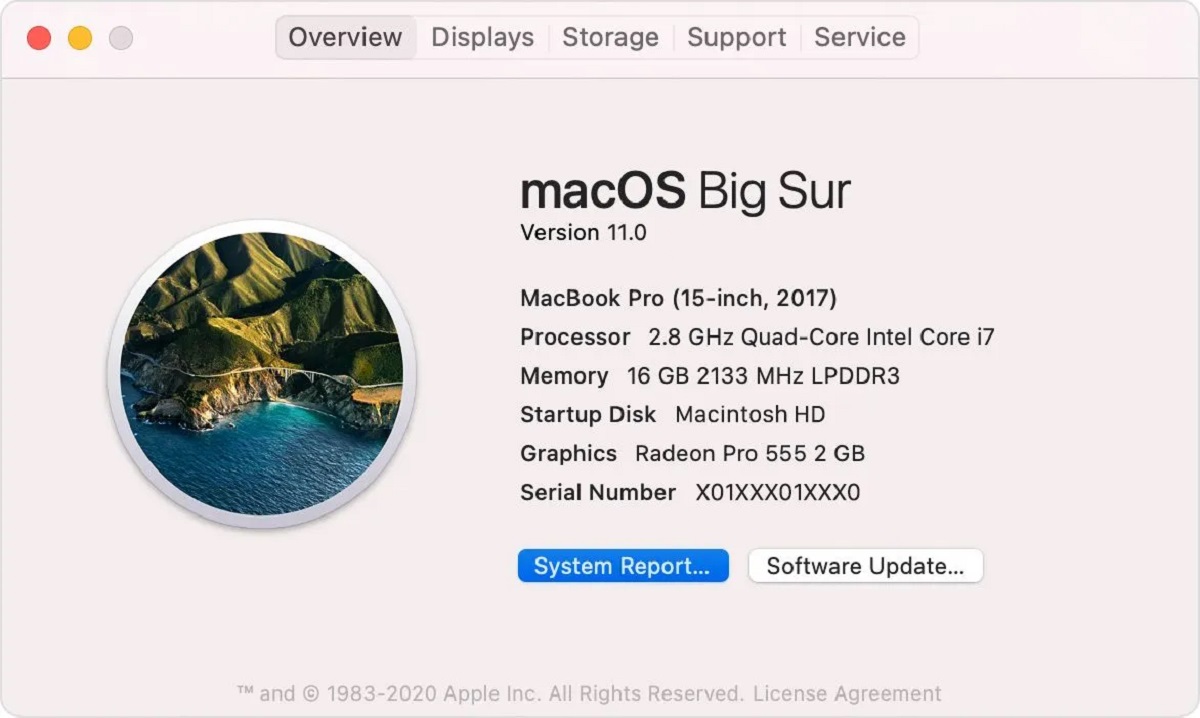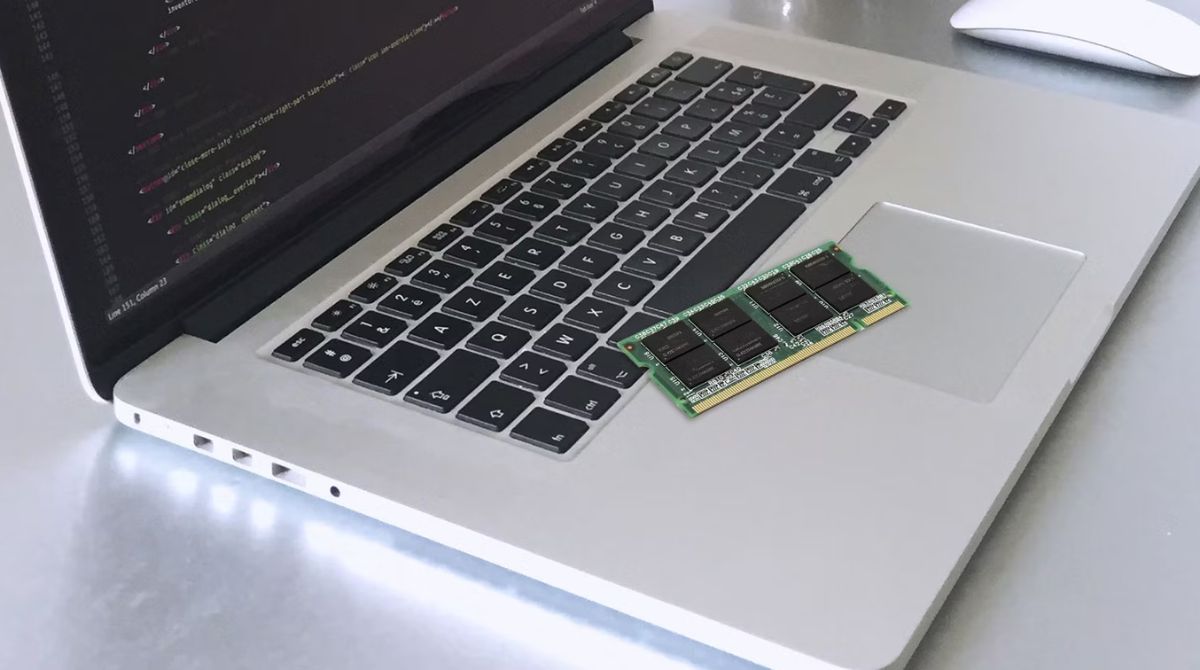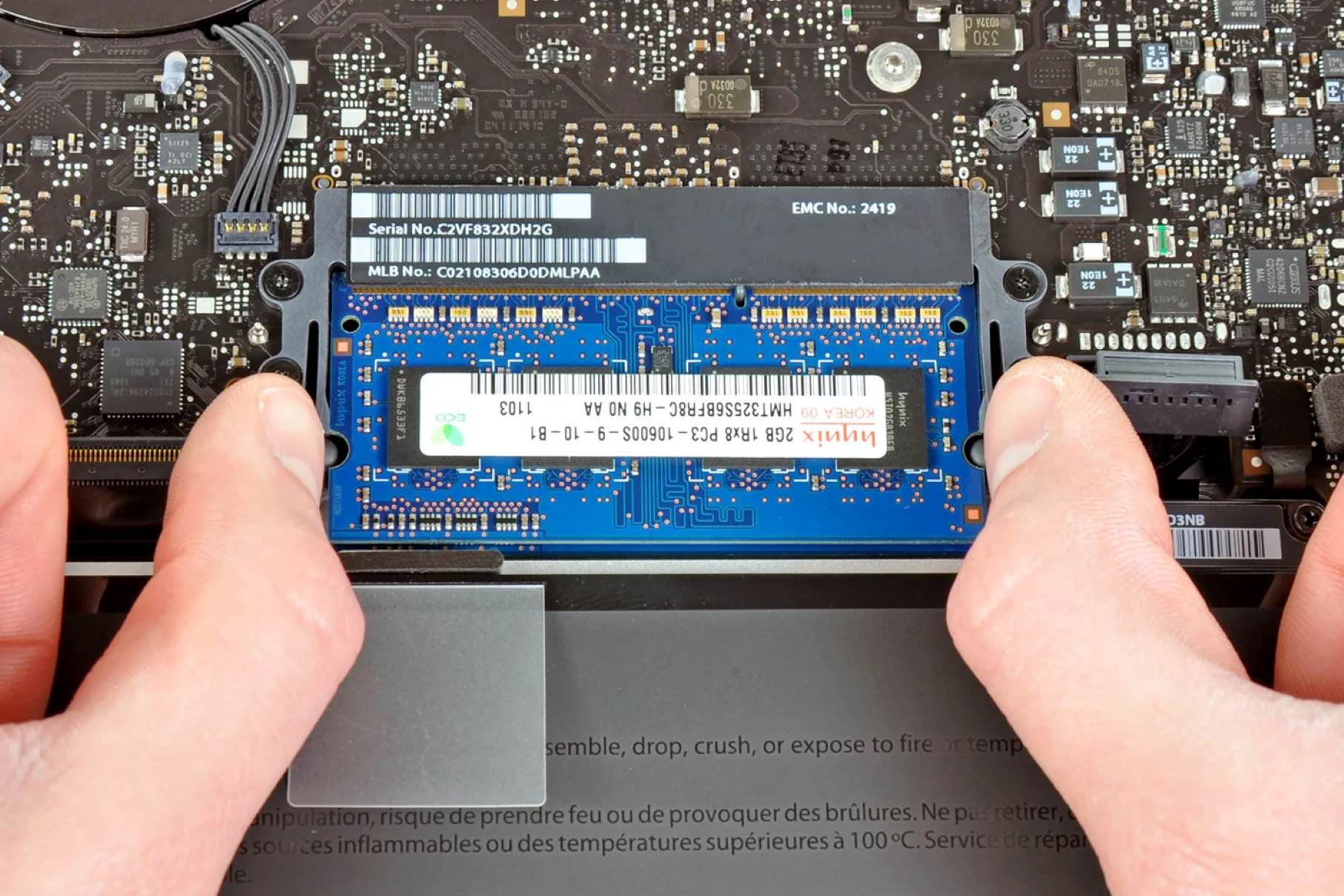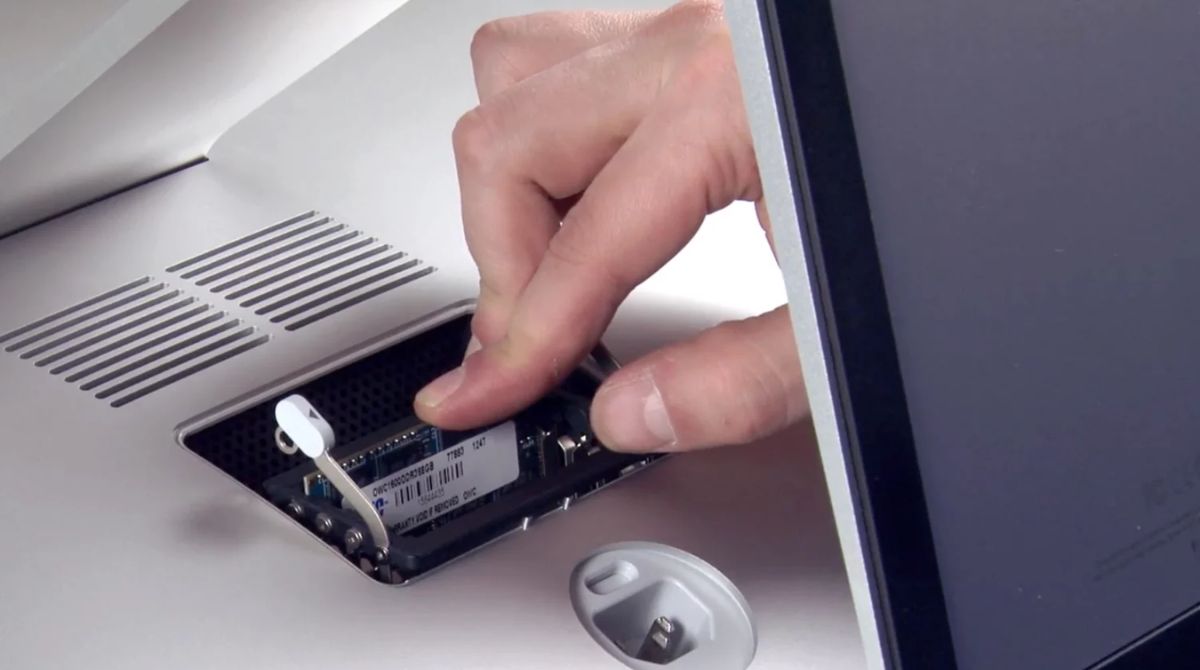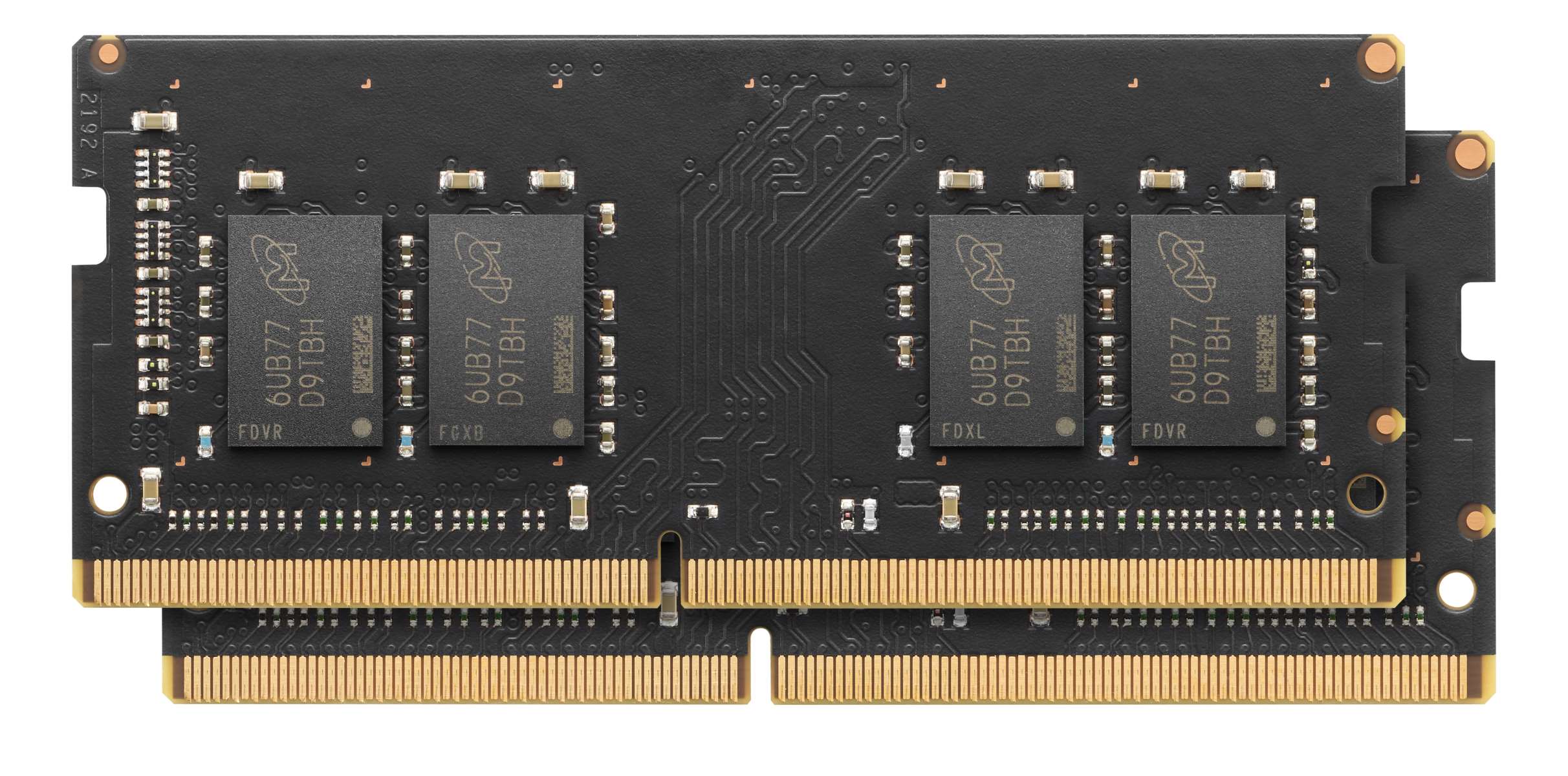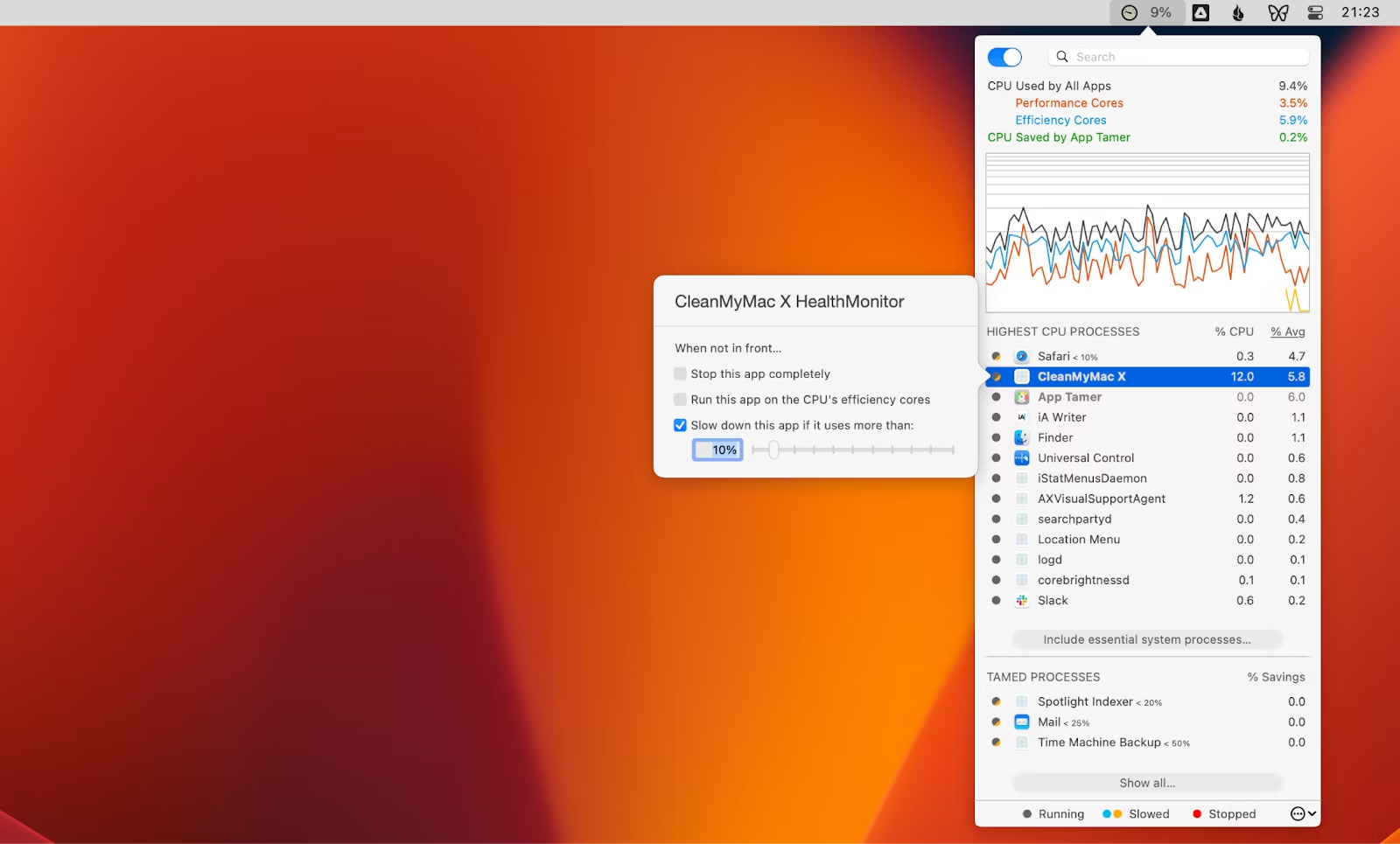Introduction
Welcome to the world of Macs! If you’re new to Mac computers, you may have come across the term “RAM.” It’s a crucial component that plays a significant role in the performance of your Mac system. Understanding what RAM is and how it works is essential to optimize your Mac’s capabilities and ensure a smooth computing experience.
RAM, short for Random Access Memory, is an integral part of any computer, including Macs. It serves as temporary storage for data that is actively used by the operating system and applications running on your Mac. In simple terms, RAM acts as the workbench where your Mac performs its tasks. The more RAM your Mac has, the more smoothly and efficiently it can handle multiple processes simultaneously.
Without sufficient RAM, your Mac may become sluggish, experience performance issues, and even freeze or crash when running demanding applications or multitasking. Therefore, having a good understanding of RAM and its importance is crucial for optimizing your Mac’s performance.
In this article, we will delve deeper into what RAM is, how it works on a Mac, the importance of RAM, how to check your Mac’s RAM, whether or not you can upgrade it, and how much RAM you actually need for optimal performance. We will also provide you with some valuable tips to help you optimize your Mac’s RAM usage.
So, if you’re ready to dive into the world of RAM on a Mac, let’s get started!
What Is RAM?
RAM, which stands for Random Access Memory, is a type of computer memory that allows data to be read from and written to quickly. It is a volatile memory, meaning that its contents are lost when the computer is powered off or restarted. RAM acts as a temporary storage space for data that the computer needs to access quickly, such as the operating system, running applications, and other data that is actively being used.
When you launch an application on your Mac, it gets loaded into RAM so that it can be accessed and executed quickly. As you open more applications or perform tasks that require memory, RAM plays a crucial role in ensuring a smooth and responsive computing experience.
Think of RAM as your Mac’s temporary workspace. It provides a place for the processor to store and access data that is being actively used. The more RAM your Mac has, the more data it can store, and the faster it can access that data. This results in better overall performance and multitasking capabilities.
RAM is different from storage devices like hard drives or solid-state drives (SSDs). While storage devices provide long-term storage for your files and applications, RAM is a temporary storage space used for immediate data access. Data stored in RAM can be quickly accessed by the processor, resulting in faster application launches, smoother multitasking, and improved overall performance.
It’s important to note that RAM size is measured in gigabytes (GB) and is a crucial factor in determining your Mac’s performance capabilities. The amount of RAM your Mac has will affect how many applications you can run simultaneously, how smoothly they will operate, and how quickly your Mac can handle data-intensive tasks.
Now that you have a basic understanding of what RAM is and its role in your Mac, let’s explore how RAM works on a Mac in the next section.
How Does RAM Work on a Mac?
RAM on a Mac works by providing a temporary storage space for data that your computer needs to access quickly. When you power on your Mac and launch applications, they get loaded into RAM so that they can be readily accessed by the processor. The more RAM your Mac has, the more data it can store and access, resulting in better performance and multitasking capabilities.
When you launch an application on your Mac, it gets loaded into RAM from the storage device, such as the hard drive or SSD. As you open additional applications or perform tasks that require memory, RAM dynamically allocates space for each process. The operating system manages this allocation process, ensuring that each application gets the necessary amount of memory for optimal performance.
Once an application is loaded into RAM, it remains there until you close it or switch to another application. This allows for quick access to the application’s data and resources, enabling smooth and responsive performance. When you switch between applications, the operating system ensures that the necessary data stays in RAM, allowing for faster task switching and improved multitasking capabilities.
When RAM becomes full, either due to launching too many applications or running memory-intensive tasks, your Mac may need to use virtual memory. Virtual memory is a portion of your Mac’s storage device that acts as an extension of RAM. It allows the system to temporarily store data that doesn’t fit into the physical RAM, but it is significantly slower to access compared to actual RAM. This can result in a decrease in performance, as the system has to rely on the slower storage device for data retrieval.
It’s also worth mentioning that the speed at which RAM operates, known as RAM speed or RAM frequency, can impact the overall performance of your Mac. Higher RAM speeds allow for faster data transfer between the RAM and the processor, resulting in improved performance. Although upgrading the RAM speed is not possible on most Mac models, it’s something to consider when purchasing a new Mac.
Now that you have an understanding of how RAM works on a Mac, let’s explore the importance of RAM in the next section.
Importance of RAM on a Mac
RAM plays a crucial role in the overall performance of your Mac. Having sufficient RAM is essential for a smooth and responsive computing experience. Here are some key reasons why RAM is important on a Mac:
1. Faster Application Launch and Responsiveness: When you open an application on your Mac, it gets loaded into RAM for quick access. Having more RAM allows the system to store more application data, enabling faster application launches and improved responsiveness. This means you can open and switch between applications seamlessly, without experiencing delays or lag.
2. Enhanced Multitasking: RAM enables your Mac to handle multiple tasks simultaneously. With more RAM, you can run several applications at once without experiencing a slowdown in performance. This is particularly beneficial for those who work with resource-intensive applications like video editing software, graphic design tools, or virtual machines.
3. Improved System Performance: Insufficient RAM can lead to a sluggish Mac. When your Mac runs out of available RAM, it may resort to using virtual memory, which is slower compared to physical RAM. This can cause noticeable delays in tasks, decreased performance, and even system freezes or crashes. Having enough RAM ensures that your Mac operates smoothly, even when running memory-intensive applications or performing complex tasks.
4. Better Web Browsing Experience: Web browsers consume a significant amount of RAM, especially when multiple tabs are open or when browsing media-rich websites. Insufficient RAM can result in slow webpage loading times, unresponsive browser behavior, and increased chances of crashes. By having an adequate amount of RAM, you can enjoy a seamless web browsing experience and reduce frustrations caused by sluggish performance.
5. Future-Proofing Your Mac: As applications and operating systems continue to evolve, their resource requirements increase. Having ample RAM allows your Mac to meet the demands of newer software releases, preventing obsolescence and ensuring compatibility with upcoming updates. Upgrading your RAM can extend the lifespan of your Mac and provide better performance for years to come.
Overall, RAM is a critical component for optimizing your Mac’s performance. It enables faster application launches, smoother multitasking, improved system responsiveness, and a better web browsing experience. Having sufficient RAM ensures that your Mac can handle resource-intensive tasks and future software updates without compromising performance.
How to Check RAM on a Mac?
Checking the amount of RAM installed on your Mac is a straightforward process. Here are the steps to check your Mac’s RAM:
1. Click on the Apple Menu: Start by clicking on the Apple Menu located in the top-left corner of your screen.
2. Select “About This Mac”: From the drop-down menu, choose “About This Mac.” A window will appear displaying an overview of your Mac’s system information.
3. Go to the “Overview” tab: In the window that opens, select the “Overview” tab. Here, you will find essential information about your Mac, including the installed RAM.
4. Check the RAM details: Under the “Memory” section, you will see the total amount of RAM installed on your Mac, displayed in gigabytes (GB). For example, it might show “8 GB” or “16 GB.” This indicates the size of RAM currently installed on your Mac.
5. Additional Details: You can also click on the “System Report” button for more detailed information about your Mac’s RAM. This will open the System Information application, where you can find comprehensive information about the RAM, including the type, speed, and number of memory slots in use.
By following these steps, you can quickly check the amount of RAM installed on your Mac. This information is essential when considering upgrading your RAM or determining if your Mac meets the requirements for specific software or tasks.
Now that you know how to check your Mac’s RAM, let’s move on to the next section to explore whether upgrading RAM is possible on a Mac.
Can You Upgrade RAM on a Mac?
Whether or not you can upgrade the RAM on your Mac depends on the specific model. While some Macs allow for RAM upgrades, others have the RAM soldered directly onto the motherboard, making it non-upgradable. Here’s a breakdown of the different scenarios:
Mac Models with User-Upgradable RAM: In certain Mac models, such as the older MacBook Pro and iMac, the RAM is user-upgradable. This means that you can open up the device, remove the existing RAM modules, and replace them with higher capacity modules to increase the RAM. Apple provides detailed instructions in the user manual or on their official website for performing RAM upgrades on these models. It’s worth noting that even with user-upgradable RAM, there might be limitations on the maximum amount of RAM supported by the system.
Mac Models with Non-Upgradable RAM: In many of the newer Mac models, including MacBook Air, MacBook Pro with Retina display, and the latest iMac models, the RAM is soldered onto the logic board, making it non-upgradable. This means that the RAM is permanently attached and cannot be replaced or upgraded by the user. The RAM configuration is often determined at the time of purchase, so choosing the appropriate amount of RAM is essential when buying these non-upgradable models.
Mac Mini: The RAM in Mac Mini models can be both user-upgradable and non-upgradable, depending on the specific Mac Mini release. Some models have user-accessible RAM slots that allow for easy upgrades, while others have the RAM soldered onto the logic board, making it non-upgradable. It’s important to check the specific Mac Mini model to determine the upgrade possibilities.
Before attempting to upgrade the RAM on your Mac, always check the official Apple website or consult the user manual to ensure compatibility and for specific instructions on performing the upgrade. Additionally, it’s worth mentioning that opening up your Mac for a RAM upgrade may void the warranty or require professional assistance, especially for models with non-upgradable RAM.
If your Mac model does not allow for RAM upgrades, you can still optimize its performance by utilizing other techniques, such as optimizing software settings, clearing up disk space, and managing applications efficiently.
Now that you know about the upgradability of RAM, let’s move on to the next section to explore how much RAM you actually need for optimal performance on a Mac.
How Much RAM Do You Need on a Mac?
Determining the amount of RAM you need on your Mac depends on the specific tasks you plan to perform and the applications you intend to run. While the minimum amount of RAM required to run macOS and basic applications is typically stated by Apple, it’s essential to consider your usage patterns and future requirements for optimal performance. Here are some factors to consider when determining how much RAM you need:
1. Basic Usage: If you primarily use your Mac for web browsing, checking emails, streaming videos, and using productivity software like word processors or spreadsheets, 8 GB of RAM should be sufficient. This amount of RAM allows for smooth operation of everyday tasks without major performance issues.
2. Multimedia and Creative Work: For tasks that involve working with multimedia, such as photo editing, video editing, or graphic design, more RAM is beneficial. Aim for 16 GB of RAM or higher to ensure optimal performance when running memory-intensive software like Adobe Photoshop, Premiere Pro, or Final Cut Pro. Having more RAM will allow for smoother, faster processing of large files and seamless multitasking between applications.
3. Gaming and Virtual Machines: If you’re a gamer or use virtual machines to run multiple operating systems simultaneously, consider having even more RAM. 16 GB to 32 GB of RAM is recommended for smooth gaming performance and efficient virtual machine operations. These tasks require a significant amount of memory to ensure smooth gameplay, minimize lag, and prevent system freezes.
4. Future-Proofing: It’s worth considering your future needs when determining how much RAM to install on your Mac. As software requirements continue to increase, having more RAM can help ensure your Mac remains capable of handling newer applications and updates. Consider investing in more RAM than the minimum requirement if you plan to keep your Mac for several years and want to avoid potential performance limitations down the line.
Remember that the amount of RAM needed can vary depending on the specific models and configurations of your Mac. It’s always advisable to check Apple’s official guidelines or consult with a professional to determine the maximum supported RAM for your particular Mac model.
By considering your usage patterns, the types of applications you use, and future needs, you can make an informed decision about the amount of RAM to install or upgrade in your Mac.
Now that you have a better understanding of how much RAM you need, let’s move on to the next section to explore some tips to optimize RAM usage on a Mac.
Tips to Optimize RAM Usage on a Mac
While having sufficient RAM is crucial for optimum performance on your Mac, there are also steps you can take to optimize your RAM usage. Here are some tips to help you make the most of your available memory:
1. Close Unused Applications: Running multiple applications simultaneously can consume a significant amount of RAM. To free up memory, make sure to close any unnecessary applications that are running in the background. This will help free up RAM for the applications you are actively using.
2. Manage Startup Items: Some applications may launch automatically when you start up your Mac, consuming valuable system resources, including RAM. Review your startup items and remove any applications that you don’t need to launch at startup. You can do this by going to System Preferences > Users & Groups > Login Items.
3. Use Activity Monitor: The Activity Monitor utility on your Mac provides insight into how much RAM each application is using. You can access it by going to Applications > Utilities > Activity Monitor. Sort the processes by “Memory” to identify any applications that are using a significant amount of RAM. Consider closing or updating resource-hungry applications to reduce RAM usage.
4. Clear Unnecessary Files: Clearing temporary and unnecessary files can help free up space on your Mac’s storage drive and indirectly improve RAM usage. Use tools like Disk Utility or third-party applications to clean up caches, temporary files, and other system junk that may be taking up valuable resources.
5. Use Safari’s Tab Management Features: If you use Safari as your web browser, take advantage of its tab management features. Safari allows you to unload tabs that are not in use, which frees up memory associated with those tabs. Right-click on a tab and select “Close Tab” or “Close Other Tabs” to reduce RAM usage while browsing.
6. Upgrade to an SSD: Upgrading your Mac’s storage drive to a solid-state drive (SSD) can significantly improve overall performance, including RAM usage. SSDs are faster than traditional hard drives, allowing for faster data access and reducing the reliance on virtual memory, which can help alleviate RAM bottlenecks.
7. Keep your Mac Updated: Regularly updating your Mac’s operating system and applications can include performance enhancements and bug fixes that can optimize RAM usage. Check for updates periodically in the App Store or enable automatic updates to ensure you are running the latest software versions.
By implementing these tips, you can optimize your Mac’s RAM usage and ensure that your system performs at its best. Keep in mind that regular maintenance and keeping your Mac clutter-free also contribute to efficient RAM utilization.
Now that you have some strategies to optimize RAM usage, let’s conclude our discussion.
Conclusion
RAM is a critical component in your Mac that plays a vital role in its performance and multitasking capabilities. Understanding what RAM is, how it works, and its importance on a Mac is essential for optimizing your computing experience. By having sufficient RAM, you can enjoy faster application launches, smoother multitasking, and improved overall system responsiveness.
In this article, we explored what RAM is and how it functions on a Mac. We discussed the importance of RAM, highlighting its impact on faster application launches, enhanced multitasking, improved system performance, a better web browsing experience, and future-proofing your Mac.
We also covered how to check the amount of RAM installed on your Mac, exploring both user-upgradable and non-upgradable models. Understanding whether or not you can upgrade the RAM on your Mac is crucial in determining its future potential for increased performance and multitasking capabilities.
Additionally, we discussed how much RAM you need on a Mac, considering factors such as basic usage, multimedia and creative work, gaming, and future-proofing. Having the right amount of RAM is key to ensuring that your Mac can handle your specific tasks and software requirements efficiently.
To optimize RAM usage, we provided helpful tips such as closing unused applications, managing startup items, using Activity Monitor for monitoring RAM usage, clearing unnecessary files, utilizing Safari’s tab management features, upgrading to an SSD, and keeping your Mac updated. Implementing these strategies can help optimize RAM utilization and enhance overall performance.
By understanding the importance of RAM and employing techniques to optimize its usage, you can maximize the capabilities of your Mac and enjoy a seamless computing experience.
So, the next time you encounter the term “RAM” in relation to your Mac, you’ll have a better understanding of what it means and how it influences your computer’s performance.







